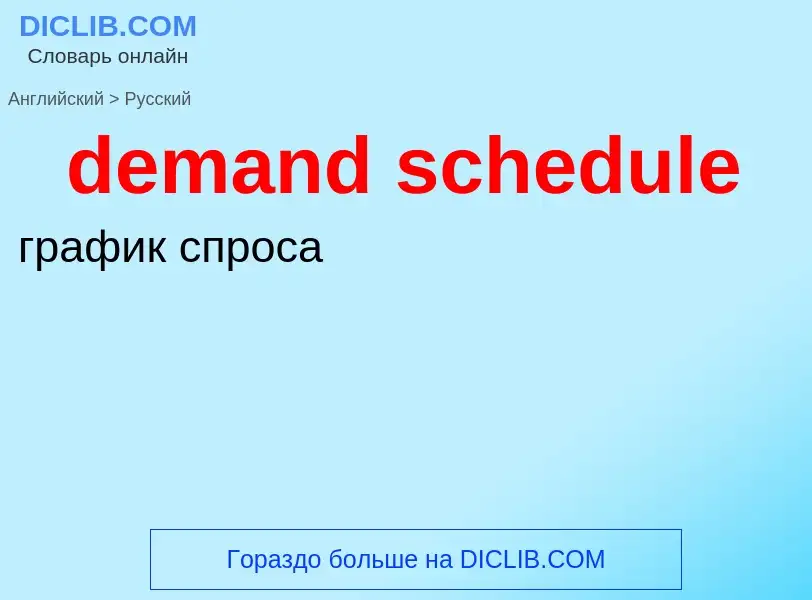Translation and analysis of words by ChatGPT artificial intelligence
On this page you can get a detailed analysis of a word or phrase, produced by the best artificial intelligence technology to date:
- how the word is used
- frequency of use
- it is used more often in oral or written speech
- word translation options
- usage examples (several phrases with translation)
- etymology
demand schedule - translation to russian
общая лексика
кривая спроса
Wikipedia
In .demand schedule, a demand curve is a graph depicting the relationship between the price of a certain commodity (the y-axis) and the quantity of that commodity that is demanded at that price (the x-axis). Demand curves can be used either for the price-quantity relationship for an individual consumer (an individual demand curve), or for all consumers in a particular market (a market demand curve).
It is generally assumed that demand curves slope down, as shown in the adjacent image. This is because of the law of demand: for most goods, the quantity demanded falls if the price rises. Certain unusual situations do not follow this law. These include Veblen goods, Giffen goods, and speculative bubbles where buyers are attracted to a commodity if its price rises.
Demand curves are used to estimate behaviour in competitive markets and are often combined with supply curves to find the equilibrium price (the price at which sellers together are willing to sell the same amount as buyers together are willing to buy, also known as market clearing price) and the equilibrium quantity (the amount of that good or service that will be produced and bought without surplus/excess supply or shortage/excess demand) of that market.: 57
Movement "along the demand curve" refers to how the quantity demanded changes when the price changes. A "shift of the demand curve" occurs when even if the price remains constant the quantity demanded changes because of some other factor such as advertising or higher quality that is not on one of the axes of the diagram, resulting in a shift of the entire demand curve rather than just a change in the current price and quantity.
Demand curves are estimated by a variety of techniques. The usual method is to collect data on past prices, quantities, and variables such as consumer income and product quality that affect demand and apply statistical methods, variants on multiple regression. Consumer surveys and experiments are alternative sources of data. For the shapes of a variety of goods' demand curves, see the article price elasticity of demand.

